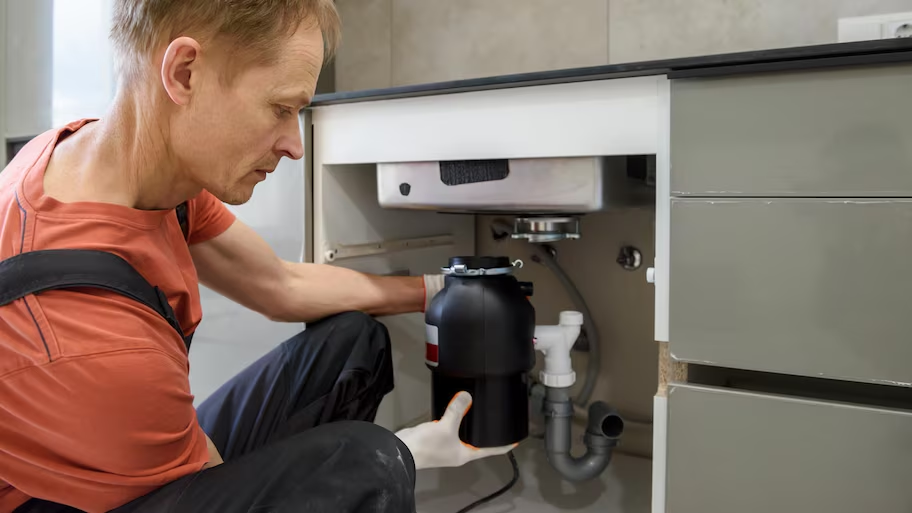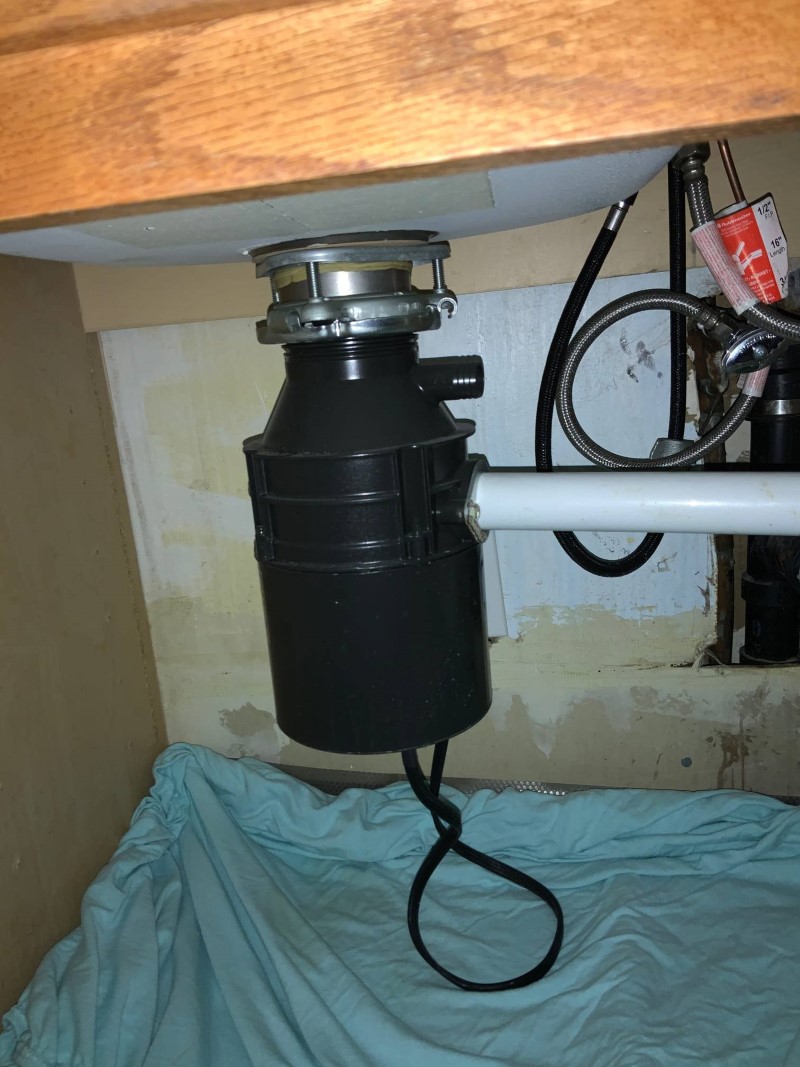This post listed below on the subject of Tips on Fixing a Leaking Garbage Disposal is seriously intriguing. Check it out for yourself and decide what you think of it.

Waste disposal unit are vital kitchen area home appliances that aid in taking care of food waste efficiently. However, a leaking garbage disposal can be a discouraging and messy trouble to take care of. Thankfully, several leaks can be taken care of conveniently with a couple of simple actions. In this article, we will certainly talk about exactly how to deal with a leaking garbage disposal efficiently.
Intro
Waste disposal unit are mounted under cooking area sinks and are made to shred food waste right into smaller sized pieces, permitting it to pass through the plumbing system easily. While these devices are generally reliable, leaks can happen over time as a result of deterioration, loose connections, or damages to the system.
Common Causes of Leakages in Garbage Disposals
Worn Seals and Gaskets
Seals and gaskets play a vital function in protecting against water from dripping out of the garbage disposal. Over time, these elements can weaken, causing leakages around the disposal system.
Loose Connections
The links in between the garbage disposal and the pipes system can become loosened over time, triggering water to leak out throughout operation.
Splits or Holes in the Disposal Unit
Physical damage to the waste disposal unit, such as splits or openings in the housing, can also cause leakages.
Recognizing the Source of the Leakage
Prior to trying to fix a dripping garbage disposal, it is vital to identify the source of the leakage. This can normally be done through visual evaluation or by conducting simple examinations.
Visual Inspection
Examine the garbage disposal unit meticulously for any type of signs of water leak. Pay close attention to locations around seals, gaskets, and link points.
Examining for Leakages
One way to test for leakages is by running water via the disposal unit and checking for any type of noticeable indications of leakage.
Tools and Products Needed for Dealing With a Dripping Garbage Disposal
Before starting the repair procedure, gather the essential tools and products, including a screwdriver, adjustable wrench, plumbing technician's putty, replacement seals or gaskets, and epoxy or patching material for repairing splits or openings.
Step-by-Step Guide to Taking Care Of a Leaking Waste Disposal Unit
Shut off the Power
Before attempting any type of repair services, guarantee that the power to the waste disposal unit system is switched off to avoid the threat of electrical shock.
Find the Leak
Identify the precise place of the leakage and figure out the reason.
Tighten up Connections
Make use of a wrench to tighten any kind of loosened connections in between the disposal device and the plumbing system.
Replace Seals or Gaskets
If the leakage is due to used seals or gaskets, eliminate the old components and change them with new ones.
Patching Cracks or Openings
For cracks or holes in the disposal system, usage epoxy or a suitable patching material to secure the broken area.
Testing the Waste Disposal Unit After Repair Service
As soon as the repair is total, examine the waste disposal unit by running water through it to make certain that the leak has actually been resolved.
Preventive Maintenance Tips to Prevent Future Leakages
To avoid future leaks, it is necessary to carry out normal maintenance on your waste disposal unit. This consists of maintaining it tidy, staying clear of placing non-food items or hard items down the disposal, and regularly looking for leakages or various other issues.
Conclusion
In conclusion, taking care of a dripping waste disposal unit is a reasonably uncomplicated process that can be finished with basic devices and materials. By adhering to the actions outlined in this short article and exercising precautionary upkeep, you can maintain your garbage disposal in good working condition and stay clear of expensive fixings in the future.
What to Do About a Leaking Garbage Disposal
A leaking garbage disposal often goes unnoticed until you confront a sopping cabinet, a foul-smelling puddle, or an audible drip-drip-drip from the unit. The fix can be frustrating, too, because the leak can stem from a number of components in the system. Fortunately, with a little sleuthing, you can zero in on the leak and—depending on the exact location—stop the icky oozing and repair the component that caused it. Worst case scenario, if it turns out that the garbage disposal must be replaced, installing a new one is a reasonable do-it-yourself task for those with basic plumbing skills. Read on to keep the cash you’d otherwise hand over to a pro.
Prepare to find the leak
Prior to testing the garbage disposal for leaks, unplug it at the wall outlet and turn off the power from the breaker box to prevent electrical shock. Then insert a watertight sink stopper into your sink drain and wipe the unit dry with a clean cloth. In any handy container, mix a few drops of food coloring into a few cups of water, and pour the dyed water onto the sink stopper to help you locate the leak.
Investigate the source
the top, where the disposal meets the sink drain the side, where the dishwasher hose or main drain pipe connects to the disposal or the bottom of the unit Inspect each of these locations while gliding a light-colored rag over the unit; the dyed water will readily show on the rag and reveal the location of the leak. If a leak isn’t immediately apparent, remove the sink stopper and pour a few more cups of dyed water down the sink drain, then check for leaks again. Leaks near the top of the unit are more likely to show themselves while the sink is plugged, while side and bottom leaks are more noticeable while the sink is unplugged.
The metal sink flange that sits directly inside the sink drain is typically sealed around the top with plumber’s putty (a clay-like sealant) and then secured from under the sink with bolts. If the plumber’s putty deteriorates, or the bolts loosen, the flange can no longer form a watertight seal between the sink drain and the disposal—which could cause a leak at the top of the unit.
To reseal the leaky flange, you must first detach the garbage disposal. Start by loosening the screws securing the main drain pipe to the disposal, then loosen the screws in the metal clamp securing the dishwasher hose to the disposal and detach the drain pipe and dishwasher hose from the disposal. Loosen the screws in the mounting ring that connects the disposal to the metal mounting assembly beneath the sink, then pull down the disposal and carefully set it on a clean, dry surface. Loosen the bolts in the mounting assembly with a wrench, then pull down the mounting assembly and set it near the disposal.

Hopefully you enjoyed reading our topic on How to fix a pretty consistent leak from my garbage disposal. Thanks a lot for taking time to read through our short article. Sharing is nice. Helping people is fun. Thank you for your time spent reading it.
Schedule An Appointment